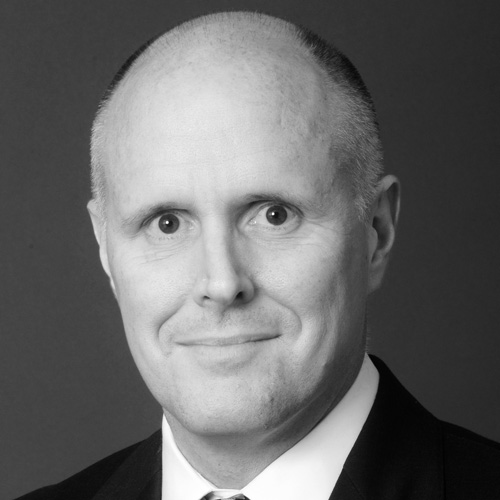Ensco is a premier service provider of offshore drilling services to the petroleum industry around the globe. This includes highly specialized equipment such as ultra-deep water rigs and jack-ups in the world’s most strategic offshore basins, including the US Gulf of Mexico, Brazil, Europe, the Middle East, Africa, Asia, and the Pacific Rim.

Since 2009, Michael Howe has played key roles in Ensco’s ongoing success. With twenty-five years in the energy industry, he originally came to the company as treasurer, then served as vice president of corporate finance followed by vice president of human resources before assuming his current position as vice president of strategic business planning and business development. The variety of these positions and responsibilities gives him a unique perspective in guiding the company’s key strategic decisions.
Number Crunching vs. Intuition
The majority of Howe’s experience has been in energy finance. That changed after he helped lead the integration of Pride International, which Ensco acquired in 2011 for $7.3 billion to create the world’s second-largest offshore driller. Howe partnered with a Pride International colleague to assimilate the two cultures, bringing together the best people, systems, and processes from both companies to create the “new” Ensco.
That six-month process helped hone Howe’s communication and decision-making skills. “People are very nervous about their jobs in an acquisition,” Howe says. “So removing as much uncertainty as quickly as possible was the best way to maintain productivity and morale. It was incredibly important to communicate openly and frequently and to be absolutely clear about the decisions that were being made.”
Managing the Pride International acquisition prepared Howe for his next position—taking over Ensco’s human resources department. This required an even greater transition in how he approached his new responsibilities.
“Most of the industry is driven by quantitative analysis and solutions,” Howe says. “But decision making in HR requires more free-form thinking to arrive at custom solutions that take into account numbers as well as the company’s culture and the impact that decisions have on people. You don’t have the same types of generally accepted standards and principles that you have in finance or engineering to guide you.”
By surrounding himself with a strong, experienced staff and leveraging his network throughout the company, Howe developed policies and procedures that met a variety of challenges. The most critical may have been reorganizing the department’s service delivery model. This change took human resources from a compartmentalized functional support structure to a “business partner” approach, with one representative assigned to each of the company’s sixty-plus rigs. This meant that every rig knew exactly who to call to resolve any issue, and each business partner knew that he or she was personally responsible for that client’s customer service. Issues could be addressed with one call to the assigned HR representative instead of having to reach multiple individuals.
“Switching to the business-partner concept simplified everything,” Howe says. “It enhanced efficiency and accountability and provided much more clarity for everyone involved. It also eliminated delays in
the process of finding the most appropriate solutions.”
A STRONG Foundation for Strategic Thinking
His experience with both quantitative thinking and soft-skill approaches to problem solving and decision making perfectly positioned Howe for his current role, leading Ensco’s strategic planning and business development. He characterizes it as a position in which he analyzes the same industry data that everyone has access to, but then develops his own interpretation based on personal insight, experience, and perspective.
“Deep-water drilling is very capital intensive and risky, so decision making is about more than just running the numbers, which is relatively easy to do,” Howe says. “You have to understand the geopolitical environment, global economic developments, and commodity price trends—and if you’ve been around for a while, you call on colleagues and other senior leaders for their input. Then it’s a matter of synthesizing all of that into an informed point of view. There’s no standard model to give you the answers.”
Howe’s recommendations are critical in guiding Ensco’s ongoing analysis of new opportunities. This goes beyond examining company financial projections and extends to factors like evaluating the cultural fit with Ensco. He is often required to weigh competing objectives with potential overseas affiliates such as nationalization programs, local employment initiatives, financial objectives, and how to handle potential sharing of Ensco’s technology and intellectual property.
Howe is quick to point out how his position requires a holistic approach. “This kind of multilayered research requires sustained focus and is therefore a bit more cerebral than any of my past positions,” he explains. “But I get a lot of stimulation and satisfaction from synthesizing the countless variables that go into developing an informed, strategic view of the future.”
In a business that changes daily he adds, “I’m very lucky that I’ve have had the opportunity to handle such a diverse range of responsibilities in such a dynamic industry.”
At the time of publication, Michael Howe was no longer with Ensco.
